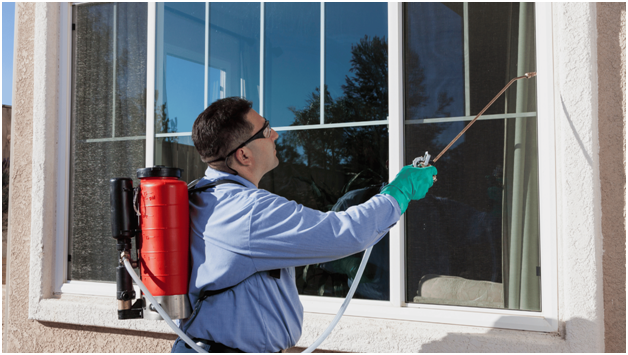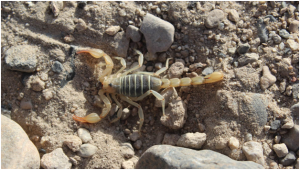5 Pest Control Solutions for Homes with Children & Pets

Maintaining a pest-free home can be a challenge, especially for families with young children and pets. While the need for effective pest control is undeniable, many families are concerned about using harmful chemicals that may pose risks to their loved ones.
Fortunately, there are safe and effective pest control solutions that protect your home while keeping your family and pets safe. This article will explore various family- and pet-friendly pest control methods, offering tips and solutions to help you maintain a healthy and pest-free environment.
Why Choose Family- and Pet-Friendly Pest Control?
Traditional pest control methods often rely on harsh chemicals and pesticides that can pose health risks to children, pets, and even adults. Pets are especially vulnerable because they may accidentally ingest or come into contact with chemicals left on the floor or in treated areas. Similarly, small children who crawl or play on the floor can easily be exposed to these toxins.
When choosing pest control solutions, it’s important to prioritize methods that are not only effective against pests but also safe for your entire household. Fortunately, advancements in pest control technology and a greater emphasis on environmental safety have led to the development of products and strategies that reduce the risk of exposure to harmful chemicals.
1. Integrated Pest Management (IPM) Approach
One of the best family-friendly pest control strategies is the Integrated Pest Management (IPM) approach. IPM is a holistic, long-term pest control strategy that combines preventive measures, biological controls, and non-toxic treatments. Rather than relying on chemicals alone, IPM focuses on understanding the behavior and biology of pests to create an inhospitable environment for them.
Key components of IPM include:
- Prevention: Seal cracks, repair leaks, and remove clutter to prevent pests from entering your home.
- Biological control: Introduce natural predators, such as ladybugs or nematodes, to control pest populations.
- Mechanical control: Use traps or barriers to prevent pests from accessing certain areas.
- Minimal use of chemicals: Only use pesticides when absolutely necessary, and opt for targeted treatments with low toxicity.
The IPM approach minimizes the need for harsh chemicals and emphasizes sustainable pest control practices that are safe for children and pets.
2. Natural and Organic Pest Control Solutions
Natural and organic pest control solutions are a popular choice for households with children and pets because they use plant-based or non-toxic ingredients to combat pests. Some of the most effective natural solutions include:
- Diatomaceous Earth: A non-toxic powder made from the fossilized remains of diatoms, diatomaceous earth works by dehydrating insects like ants, fleas, and bed bugs. Sprinkle it around problem areas, but ensure it is food-grade if you plan to use it indoors around children and pets.
- Essential Oils: Certain essential oils, such as peppermint, eucalyptus, and lavender, act as natural repellents for pests like ants, mosquitoes, and fleas. You can create a homemade spray using essential oils diluted with water and apply it to problem areas. However, be cautious with pets, as some essential oils can be harmful to cats or dogs if used in excessive amounts.
- Borax: Another natural solution, borax is effective at controlling ants, cockroaches, and other insects. It works by disrupting their digestive system. You can mix borax with sugar to attract pests, but place it in areas that are inaccessible to pets and children to avoid accidental ingestion.
- Neem Oil: Derived from the neem tree, neem oil is a safe and organic pesticide that can be used on plants to control aphids, mites, and other garden pests. It’s also safe to use indoors for combating houseplant pests.
3. Pet-Safe Bait Stations and Traps
Bait stations and traps are excellent alternatives to chemical sprays for homes with children and pets. These products offer a more targeted approach to pest control, reducing the risk of accidental exposure to toxic substances.
- Enclosed Bait Stations: For pests like ants and roaches, enclosed bait stations provide a safer option. These stations keep the bait contained, reducing the risk of children or pets coming into contact with the poison. They also allow for precise placement in areas where pests are active.
- Non-Toxic Traps: For rodents and insects, non-toxic traps such as glue boards, snap traps, or electronic traps offer a chemical-free solution. These traps can be placed in areas out of reach of children and pets, ensuring a safe and effective pest control method.
4. Eco-Friendly Pest Control Services
If your pest problem requires professional intervention, consider hiring an eco-friendly pest control service. Many pest control companies now offer services that prioritize the safety of your family and pets by using low-toxicity treatments and IPM practices. When selecting a service, inquire about the types of products they use and request child- and pet-friendly options.
Professional pest control companies can also provide guidance on preventive measures and recommend safe treatments that are effective for specific pests. This option is particularly helpful for more serious infestations where DIY solutions may not be sufficient.
5. Preventive Measures
Prevention is key to minimizing the need for chemical treatments and maintaining a pest-free home. Simple preventive measures can significantly reduce the risk of pest infestations and create a safer environment for your family and pets:
- Seal Entry Points: Inspect your home for cracks, holes, or gaps around windows, doors, and foundations. Use caulk or weatherstripping to seal these entry points, preventing pests from gaining access.
- Keep Food Sealed: Store food in airtight containers and clean up crumbs or spills promptly to avoid attracting pests.
- Maintain Yard Cleanliness: Regularly mow your lawn, trim bushes, and remove debris from your yard, as overgrown vegetation can harbor pests like ticks and fleas.
- Eliminate Standing Water: Mosquitoes and other pests breed in standing water, so make sure to drain any water collected in bird baths, flowerpots, or gutters.
Conclusion
When it comes to pest control in homes with children and pets, safety is a top priority. Fortunately, there are numerous family- and pet-friendly pest control solutions that effectively eliminate pests without posing risks to your loved ones.
From the Integrated Pest Management approach to natural remedies and professional services, you can create a pest-free environment that prioritizes the well-being of your family and pets. Remember to focus on prevention, use non-toxic methods, and always consider the safety of your household when choosing pest control strategies.






